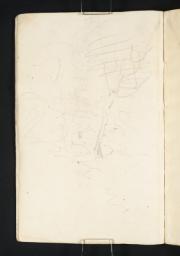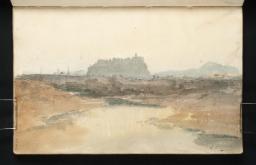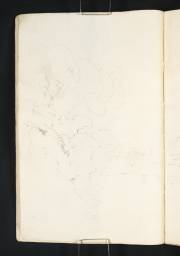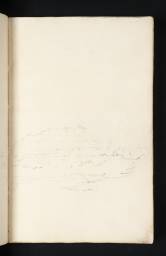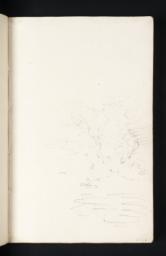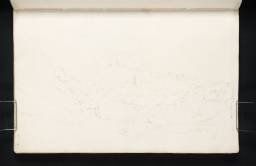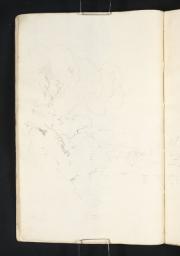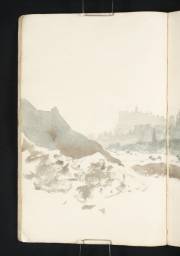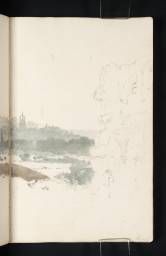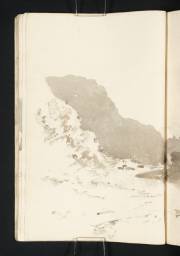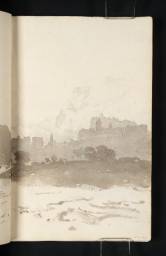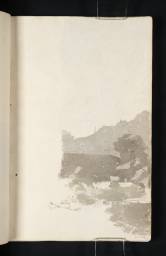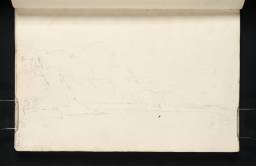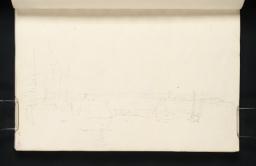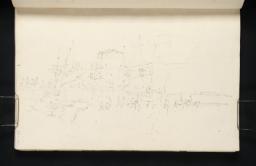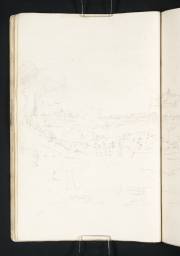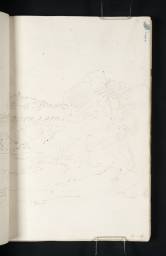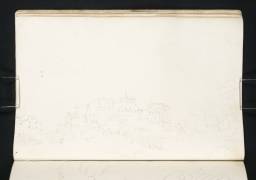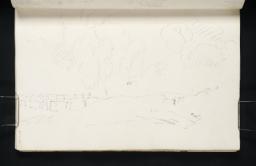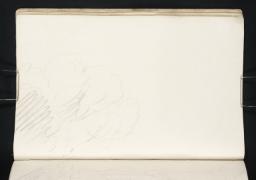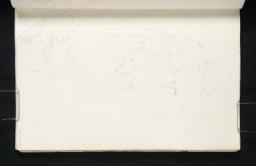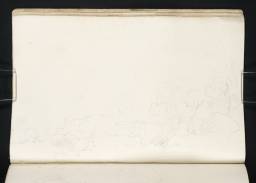Turner Bequest LV 1–77
Sketchbook half-bound in marbled boards with leather spine
78 leaves of white wove paper; page size 195 x 127 mm; watermarks ‘1794 | J Whatman’ and ‘W Elgar | 1794’
Inscribed on a label on the spine by Turner in pen and brown ink ‘117 Edinburg[?h]’ (D40729)
Numbered 166 as part of the Turner Schedule, and endorsed by the Executors of the Turner Bequest, Henry Scott Trimmer, Charles Turner, Charles Lock Eastlake and John Prescott Knight in ink ‘No 166 | H S Trimmer C Turner’ and in pencil ‘C.L.E.’ and ‘JPK’ inside front cover, top left
Inscribed in red pencil ‘S 15’ inside front cover, top right
Inscribed in pencil ‘LV’ inside cover top left
Stamped in black ‘LV’ inside cover top left
78 leaves of white wove paper; page size 195 x 127 mm; watermarks ‘1794 | J Whatman’ and ‘W Elgar | 1794’
Inscribed on a label on the spine by Turner in pen and brown ink ‘117 Edinburg[?h]’ (D40729)
Numbered 166 as part of the Turner Schedule, and endorsed by the Executors of the Turner Bequest, Henry Scott Trimmer, Charles Turner, Charles Lock Eastlake and John Prescott Knight in ink ‘No 166 | H S Trimmer C Turner’ and in pencil ‘C.L.E.’ and ‘JPK’ inside front cover, top left
Inscribed in red pencil ‘S 15’ inside front cover, top right
Inscribed in pencil ‘LV’ inside cover top left
Stamped in black ‘LV’ inside cover top left
Accepted by the nation as part of the Turner Bequest 1856
Exhibition history
References
This sketchbook is devoted entirely to studies in and around Edinburgh, and to a series of views at Roslin, for which Turner seems to have made use of spare pages at the back of the book, holding it upside-down; there are further studies at Roslin in the Dunbar sketchbook (Tate D02660–D02679; Turner Bequest LIV 39 verso–49 verso). In the present book he seems to be settling into a routine of drawing very summarily on both pages of an opening, a practice that becomes almost standard in the contemporary Scotch Lakes book (Tate; Turner Bequest LVI). Most subjects are jotted down rapidly, though in the Edinburgh views much detail is incorporated; the city also inspired him to a group of atmospheric wash studies, sometimes in delicate colour.
Gerald Wilkinson identifies ‘an enormous leap forward’ in these drawings, by which the artist transforms himself into ‘the mature Turner at last’, with ‘landscape used to represent atmosphere’ and a pencil drawing that ‘might pass as an early Paul Klee or a Cezanne’1 (see folios 24 verso–25 recto; D02845–D02846). Anxiety to equate Turner’s work with that of modern masters a century or more later seems somewhat strained. In any case, such a move towards maturity of utterance might be dated a little earlier, and associated with the large watercolour studies made in Snowdonia in 1799, addressed in the relevant section of this catalogue. Nevertheless, the delicate washes of the Edinburgh views here achieve a memorable level of poetic eloquence. They lie behind the complexity of the large watercolour views of Edinburgh that Turner sent to the Royal Academy in 1802, Edinburgh New Town, Castle, &c; from the Water of Leith2 and Edinburgh from Caulton-hill, shown in 1804 (Tate D03639; Turner Bequest LX H).3
Turner was to revisit Edinburgh and its neighbourhood, as well as other places first visited by him on this 1801 tour, in 1818 and 1822, having been commissioned to make illustrations for the Provincial Antiquities of Scotland, with text by Walter Scott.
Finberg records John Ruskin’s endorsement on an associated wrapper: ‘166. Early Studies at Edinburgh. Some coloured, and interesting.’4
How to cite
Andrew Wilton, ‘Edinburgh sketchbook 1801’, sketchbook, May 2013, in David Blayney Brown (ed.), J.M.W. Turner: Sketchbooks, Drawings and Watercolours, Tate Research Publication, April 2016, https://www

